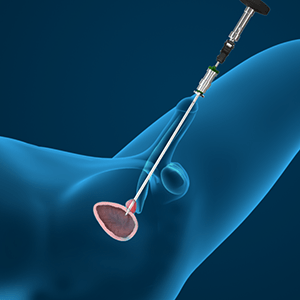
What is the Transurethral Resection of Prostate?
The prostate gland is an sexual organ found in menthat sits below the bladder. The urethra, which carries urine from the bladder to the penis and out of the body, travels through the center of the prostate. The gland grows with age and in some men can compress the urethra as it grows. This condition is called benign prostatic hypertrophy (BPH) and causes urinary problems, such as difficulty in emptying the bladder and frequent urinary infections.
Procedure of Transurethral Resection of Prostate
Transurethral resection of the prostate (TURP) is a procedure that involves the surgical removal of a section of an enlarged prostate gland. TURP uses a surgical instrument called a resectoscope (thin metal tube with a light source, camera, and cutting tool) to shave away the inside of the prostate and reduce compression of the urethra. It is performed through the penis without any external incision.
TURP is performed under general or spinal anesthesia. Your surgeon inserts the resectoscope into the penis and advances it through the urethra (the tube that carries urine from the bladder out of the body). The cutting tool is guided through the resectoscope and is heated with the help of an electric current. The heated wire is used to cut and remove the excess tissue. At the end of the procedure, the blood vessels are sealed to prevent excess bleeding and the bladder is irrigated to flush out pieces of the tissue. The complete surgery takes about 1 hour.
Complications of Transurethral Resection of Prostate
As with all surgical procedures, TURP may be associated with certain complications including:
- Retrograde ejaculation (semen does not ejaculate from the penis, but instead flows into the bladder)
- Narrowing of the urethra
- Infection
- Painful urination
- Bleeding, with rare need for blood transfusion
- Urinary incontinence (loss of bladder control)
- TURP syndrome (rare disorder associated with fluid build-up in the blood)
Post Operative Care of Transurethral Resection of Prostate
Expect to stay in the hospital overnight after your procedure. Some patient stay for 2-3 days, but the majority go home the next morning. You will leave with your catheter in place to allow your urine to drain. This will be removed 2-3 days later in the office.
It is normal to see blood in the urine after your procedure. This can been seen on and off for up to a month. Avoid strenuous activity for two weeks after your surgery. Don’t have sexual intercourse or masturbate for two weeks after your surgery. You should feel that you are back to normal within a few weeks.
Most patients feel their urine stream is significantly improve as soon as the catheter is removed. It is normal for the urine stream to slow down slightly in the next few weeks, but should remain much better than where you started prior to the surgery.
The prostate can regrow after this surgery, but is usually takes 10-15 years before any problem may occur and only a small percentage of men every require a second procedure.
